Single light portrait taken at f2 - Bokeh control 4
For those of us that have been shooting for a while it's pretty easy to argue the importance of lenses even to the point that they are the most important part in the photographic system.
I've had lenses that have outlived 3 or 4 camera bodies and they continue to produce results that signify my personal stye far more than flash heads or cameras. Those tools pride themselves on being devoid of individual looks and effects but lenses on the other hand sing their quirks, personalities and arguable flaws from the roof-tops. That's why when we find a lens we love we never let it go because it defines our work far more than we would like to admit.
So now that I've outlined my opinion on the importance of finding the right lens for you I have also stated that all lenses were not designed to be equal and as such certain aspects in one lens that some photographers worship other photographers will also hold with little importance. It's a personal preference and not simply a binary decision of good and bad, otherwise we'd all own the same lens and the world of photography would be a far duller place to be.
You may have noticed that this isn't the traditional route a lens review usually takes and that's because I've never done one before and the reason for that is for the statements I've already preached up until this point. Lenses are an incredibly personal choice, a lens review of diffraction indexes, anamorphic graphs and chromatic fringe outlines are purely focused on the perceived flaws in the lens and the fewer of these 'flaws' in a lens review usually interprets into the lenses being rated as 'better'. I for one have little time for that philosophy and graph disciples and spreadsheet zealots tend to make awful photographers. I've shot ad campaigns and album covers and fashion editorials on kit lenses, cheap third party lenses and 60 year old lenses, not to prove a point or because I didn't care but because they produced great images via a look and style that no lens review can quantify.
I promise I'll get down from my soap-box now but to sum up; a lens is a very personal decision, some will hate the shots a certain lens takes and some will love them and my review just like anybody else's will not answer that for you, you simply have to try the lens out for yourselves to really grasp whether it will be a permanent fixture in your camera bag or not. With all that being said though, here's my 'hands-on' findings, take a look and if it peeks your interest I recommend you try one out yourself as soon as you can.
Single light portrait taken at f2 - Bokeh control 7
I will preface the following 'review' by stating that as much as I'd love to be, I am not sponsored or supported in any way by Petzval. I purchased this lens like every other person so the following opinions are my own.
About a year ago in the summer of 2015 I decided to join the Kickstarter phenomena and back the new Petzval 58 Bokeh control lens. In March of 2016 I finally received my lens and eagerly set up a test shoot to try out the new addition to my lens family.
'So what is this Petzval lens? I've never heard of this lens company before.'
Joseph Petzval made his first lens in Vienna, Austria in 1840 and it quickly became famous simply because it was the fastest lens ever made at the time with a staggering aperture of f3.6. This breakthrough brought down painfully long shutter speeds and portrait photography flourished from there. The new Petzval 58 lens is based on his designs and specifically the bokeh that his signature lenses produced.
Fast forward 176 years and we have the crowd-funded bokeh control version of a 58mm prime lens based on those original designs.
Here's what I got as part of my Kickstarter pack. Bear in mind that if you order this lens now that you wont get all of this but to be fair all you really need is the lens anyway the rest is just a nice bonus but certainly not fundamental in the results achieved.
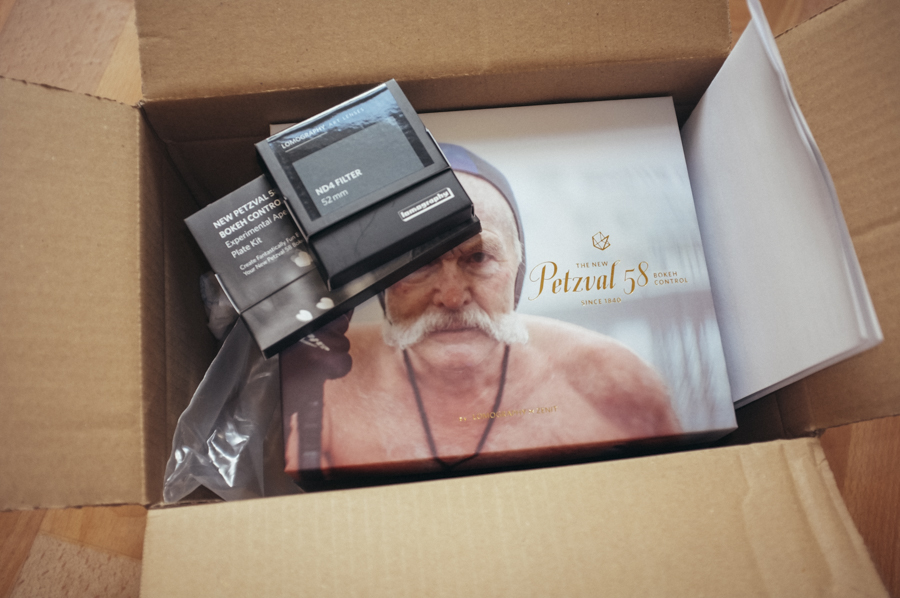
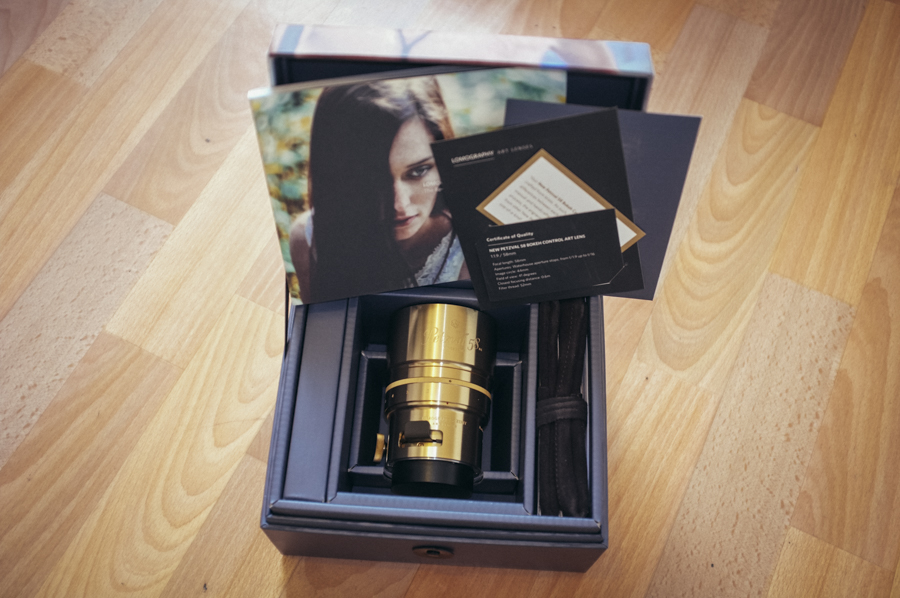
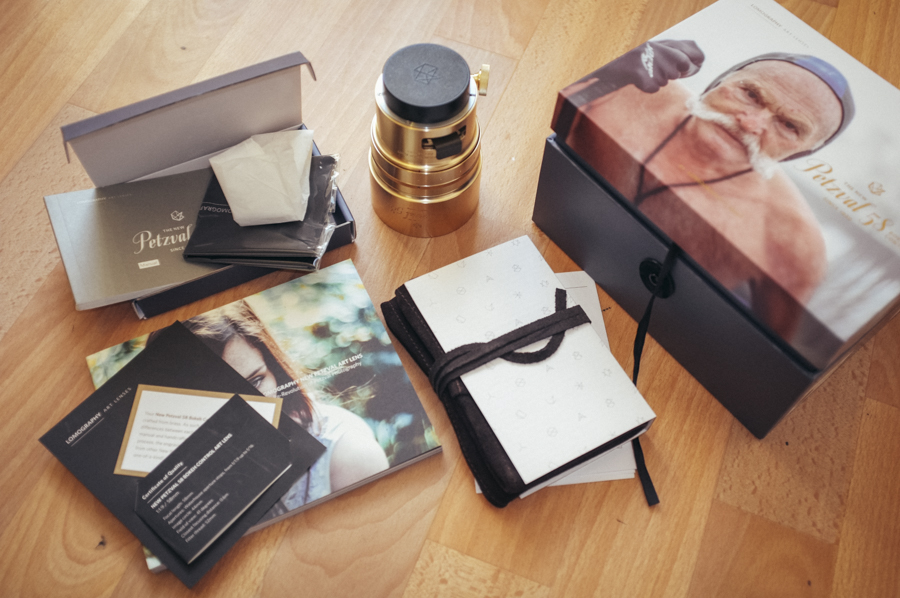
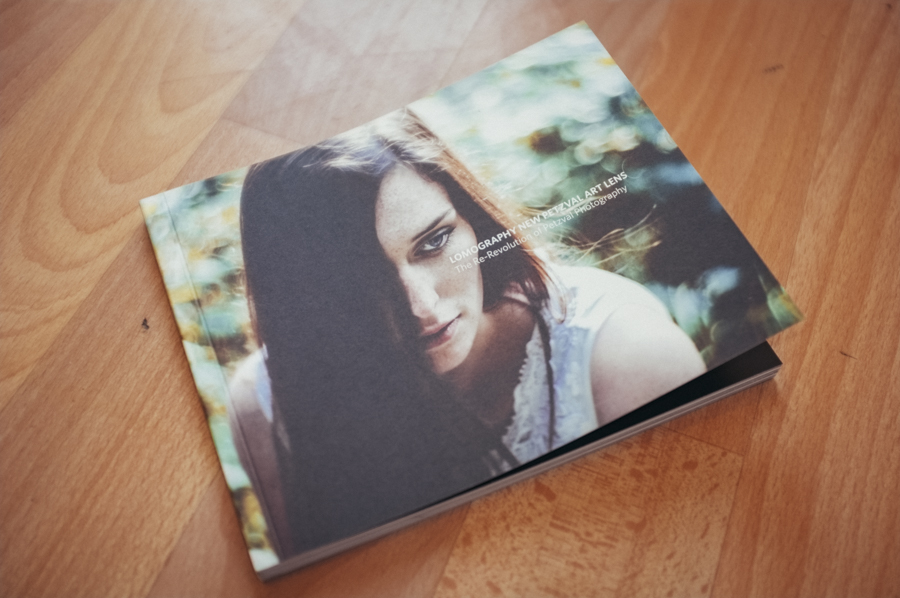
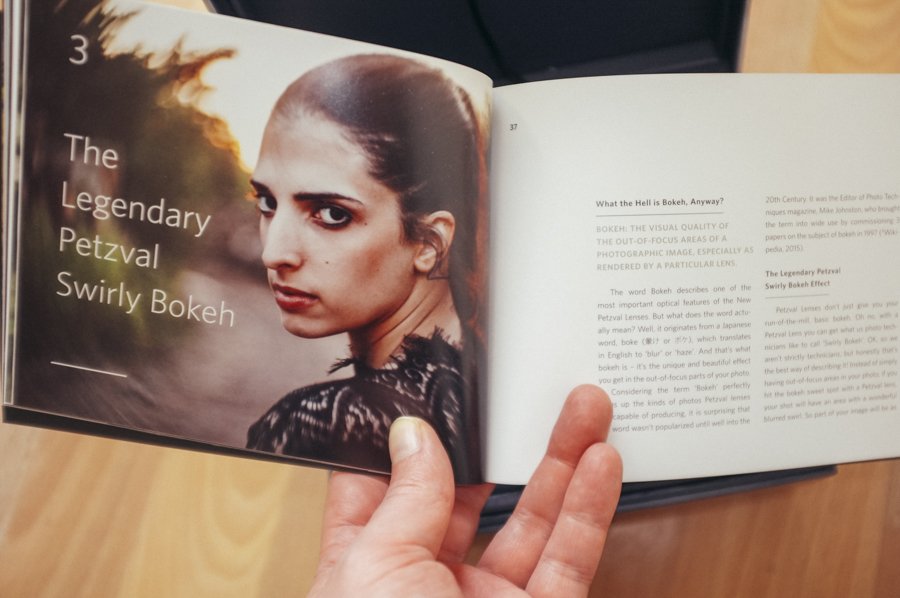


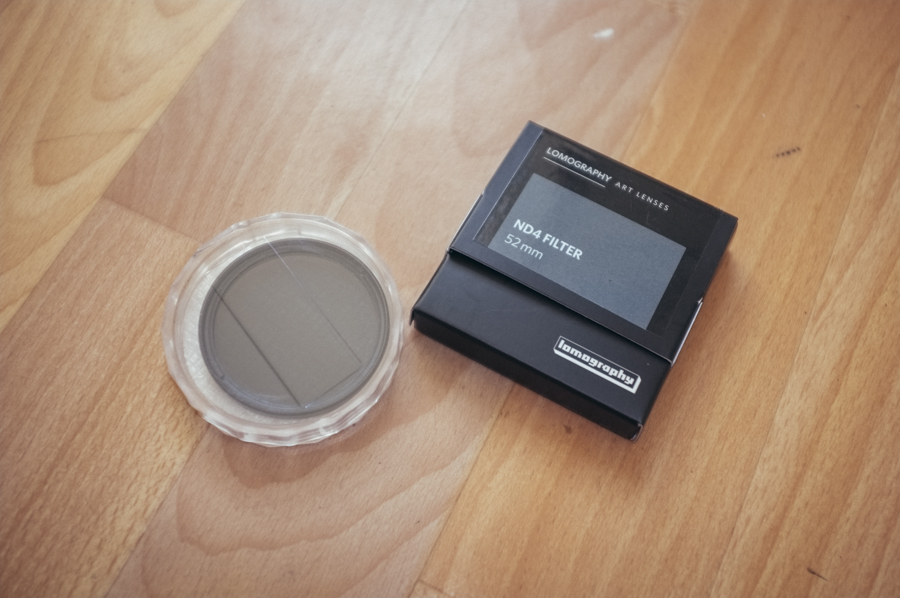
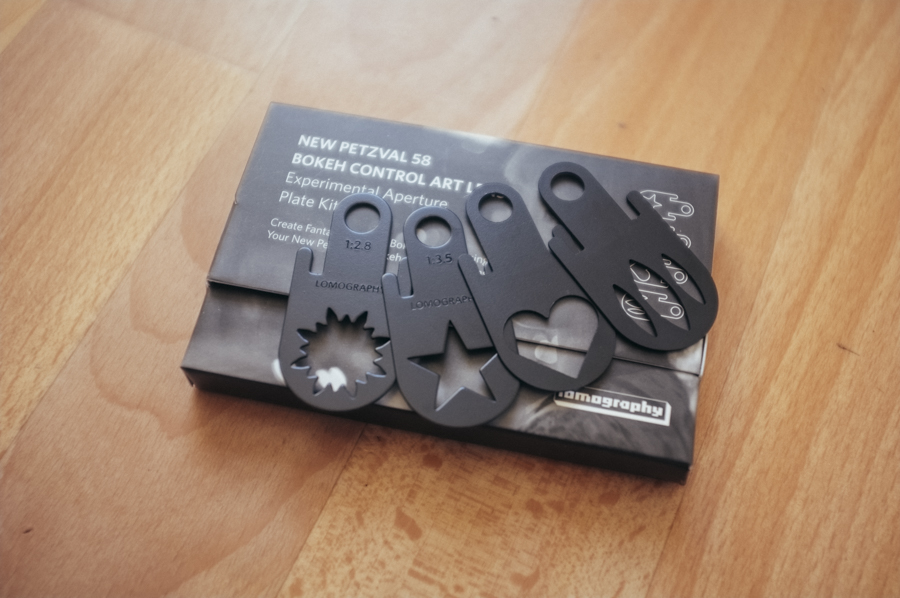
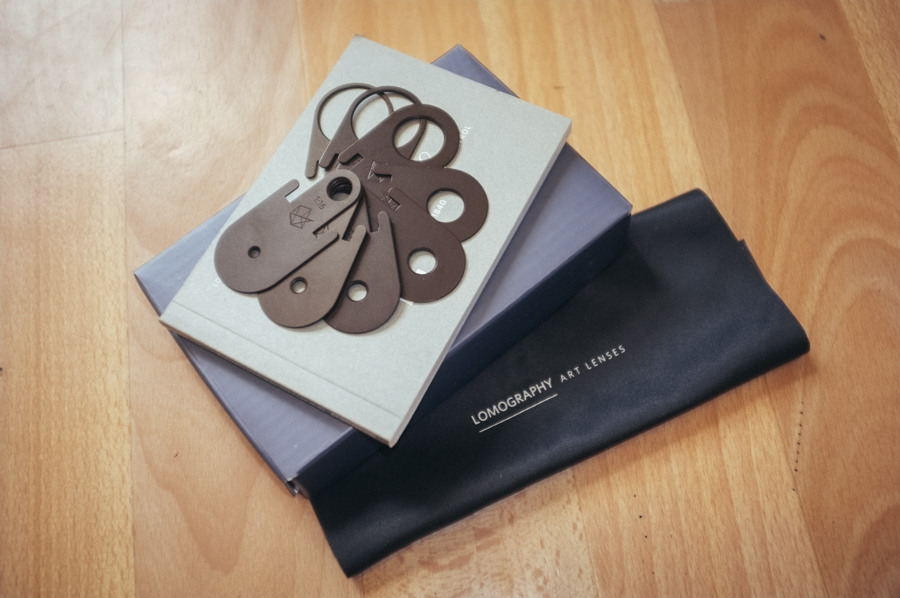
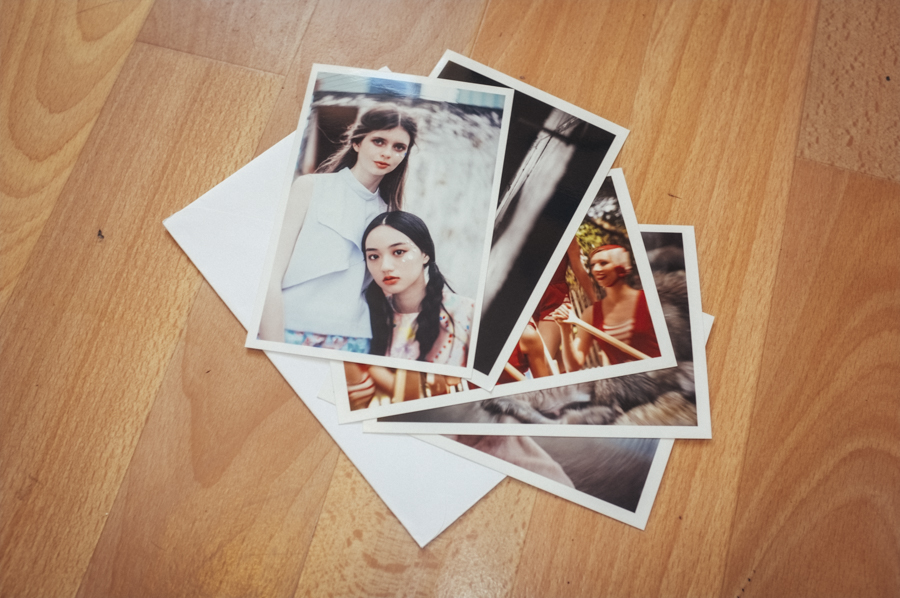
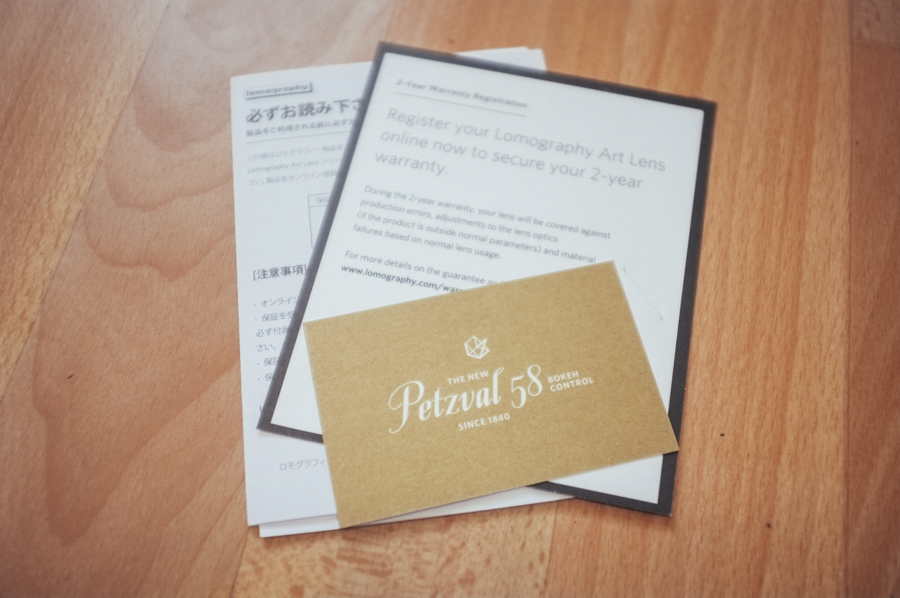
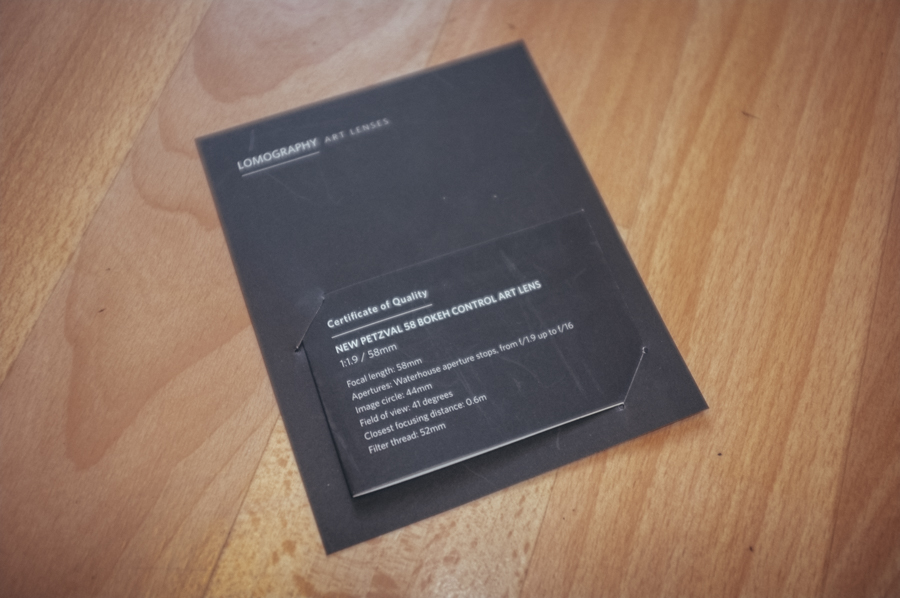
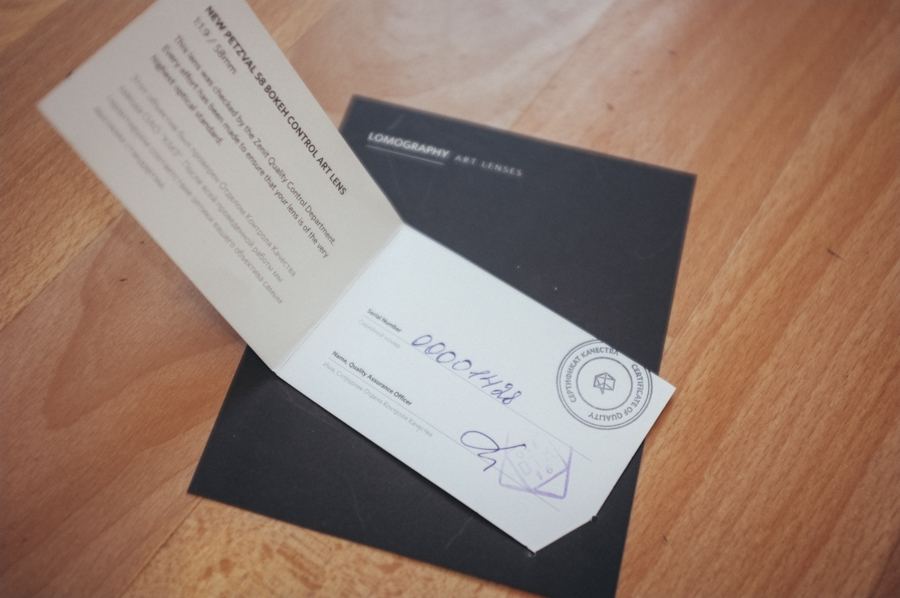
Cool ok so thats what the Kickstarter kids like me got but what will you get if you purchase the lens. This is what's currently listed on the package contents online as of March 2016.
- New Petzval 58 Bokeh Control Art Lens Brass *It does also come in black
- Standard Waterhouse aperture plates
- Front and rear lens cap
- Leather Pouch
- Only for preorders: 4 special aperture plates *I think thats pre-orders prior to May 2016
- Photo and manual book
- Instruction manual
So even if you buy it now you're not missing out on anything beyond the ND filter which although I think is a mandatory addition you can pick them up anywhere and it doesn't need to be a Petzval specific one any 52mm ND filter will work.
Personally I feel theres a little lip-service being paid to the 'hipster' community here with the leather pouch and heart shaped bokeh plates but even so it's a very well put together package and nothing seems last-minute or unfinished. All-in-all I was very happy indeed as I unboxed it for the first time. Most importantly thought is that the big brass beastie screams quality when you pick it up. The thing isn't going to win any prizes for being lightweight but every feels very solid and well made indeed.
The brass version Petzval 58 on my Nikon D600
'Looks like a pretty nice lens Jake but give me the elevator pitch for it'
- It's a 58mm prime lens.
- The version I have here is the Brass version and it also comes in Black.
- The apertures are manually changed via a drop-in process
- This one is a Nikon fit but they also have Canon fit version and with widely available adaptors you can also attach them to Fuji, Olympus and Sony cameras.
- It's a manual focus lens and does not communicate in any way to the camera
- It has the ability to dial in the desired about of bokeh without effecting exposure
'So what is this Bokeh control thingy that everybody is bangin' on about?'
The dial on the barrel of the lens in the centre of the shot is the bokeh control ring. It goes from 1-7 and gives the ability to add or reduce the softness of the background bokeh.
This bokeh control knob is the thing that got everybody including myself excited last year and it's essentially a way of manually dialling in the amount of bokeh swirling and out of focus parts of the shot. This isn't the first time we've seen this idea and I know Nikon played with concept again in the 90's with their DC (defocus control) lenses (here's the master lens reviewer Kenny R gushing over the 105mm version). The results achieved with DC's weren't anywhere near as pronounced as they are here in the Petzval and it was a crisper and a more precise look but still this idea has been around forever. The reason why it's exiting here is because of the signature Petzval bokeh look that was a gorgeous look even before the introduction of the additional bokeh control so this extra user controlled refinement is a welcome addition indeed.
The bokeh control dial goes from 1-7 with 1 being the least and 7 being the most amount of blurring/swirling/bokeh. This dial in my opinion is the key feature of the lens and after my first test it's actually turning out to be more of a diverse look than I anticipated, which is great. What I mean is that it's not simply a case of the higher the input number the more blur, in fact I found that even on the lowest setting the bokeh although not prominent is actually smoother giving it the impression of being more blurred than it actually is. What this does is to separate the subject from the background a lot more clearly so it's a completely different look not necessarily better or worse. If you go onto the Lomo/Petzval site and look at the test shots they've shot at different apertures and bokeh controls you'll see what I mean. I've borrowed them below to show you.
You can see that at the same aperture value the bokeh control produces very different looks and more is not necessarily better. The lower bokeh control values create fantastic separation between subject and background whereas the higher values creates more swirling. Image taken from the lomography website and is owned by them and not my own
Beyond the obvious bokeh control of the backgrounds the bokeh control knob also effects the size of the focal 'sweet spot', this is the area in which the lens blurs regardless of the point of focus. You can see in the portrait images that I took at different values later on but its also present in the shots above. See how on the left hand image that the ladies sweater is sharp all over whereas the right hand shot the sweater is blurred even though the focal point hasn't moved. This is certainly a major factor to consider when choosing your bokeh control value.
Cool, cool Jake yeah I've seen a million and one bokeh ridden sun-through-tree-leaf shots but what's the lens actually like in a real life situation that doesn't involve a mobile forest and a sunny day?
Glad you asked as I was curious myself because up until I got my hands on the lens I wasn't sure how it would respond with real-life studio portraits either. My test shots are far from extensive and the purpose was to test the bokeh control at different values under studio portrait parameters. The following shots were all shot a the same f2 value and with the x4 ND filter attached to achieve that exposure with my studio strobes. The model was a metre from the background and was lit with a single large softbox behind me.
Click on the images above to enlarge them. All images above were taken at f2 - bokeh control 1
Click on the images above to enlarge them. All images above were taken at f2 - bokeh control 4
Click on the images above to enlarge them. All images above were taken at f2 - bokeh control 7
It should be fairly apparent from the shots taken here that the difference in the bokeh control even in such close quarters and with limited background excitement is significant. Even so I am still strangely excited that I am not any further forward on my preference of bokeh control value. I had assumed that under these portrait conditions that the optimum bokeh input would be glaringly obvious. I had thought that either the lower values would be too insignificant to warrant using at all and similarly I had also assumed that the higher input values would be so dramatic to be rendered useless as well. Neither proved to be the case, in fact I feel that all the values have different merits and advantages and in the future I still think I would shoot any portrait session at varying bokeh input levels to get different looks not just the 'best' look.
'It's a 58mm prime lens, surely thats not great for portraits?'
I've been asked about this several times before, 'which is the best portrait focal length for portraits?' and although the industry deems 85mm to 105mm as the preferred range I disagree. Petzval already has the 85mm out and I waited for the 58mm for this reason, in fact I felt so strongly about it that I wrote a whole article on the issue. If you're unsure or are interested to see what I mean then you can check out why 50mm is is more than fine for portraiture here 50mm vs 85mm: Which is the best focal length for portraiture?
The focal point is always dead centre, you can see here that I've gotten the model to put her hands above her head to give me a reason to keep her head in centre frame.
'That sweet-spot tho', it seems kinda small'
I have to say that yes, the size of the focusing sweet spot is going to be the biggest problem for me as I shoot studio portraits. The issue is that the edges of the frame are always going to be 'soft' regardless of the focusing or bokeh control value. You can see from my test shots that this sweet-spot does get bigger with the bokeh control set to 1 and pretty small when set to 7. You'll also see me try to adapt and compensate for this by shooting landscape and when in portrait orientation having the model put her hands above her head to give me a reason to keep her head in the centre of the frame where the focused part is. Like I said theres no way around this and until there's a way to adjust the position of the sweet spot like in other art lenses your compositions will have to always have your subjects bang in the middle of frame.
It's also worth mentioning that although you can buy this lens and use it with adaptors to attach it to APS-C and micro 4/3 cameras your blurred edges will be greatly reduced on those smaller sensor sizes. Larger sweet spot, less blurring. Just something to consider if you're still using those little cameras.
'Those shots look great Jake but is there anything else I should know?'
That big ol' dial thing there is actually how you focus the lens. When the lens is attached it sits at the base of the lens and is operated via your left hand.
To be fair the important stuff is in the results and the rest is fluff in my opinion but with that being said there are certainly a few things to bear in mind. Remember that this lens is re-make of a vintage classic and as such there's a few things that are quite different to what most of us are used to with our modern lenses.
Focusing
First off, remember this is a manual focus lens. I've come from an age of manual focus cameras and I've also been shooting vintage lenses and art lenses that are all manual focus for years so this isn't an issue for me but I will say that manual focussing is a skill like any other. It takes time to get good at it and its perfectly natural to get out of focus shots to begin with, it happens and you will get fewer and fewer of them as you get more practiced with the discipline. But not only is this a manual focus lens but the focusing is done via a knob at the base of the lens not via the traditional barrel focus control we're currently used to. This I've never used before but I found it surprisingly ergonomic and easy to use in both landscape and portrait orientation. The focusing is firm and solid and felt surprisingly precise and at no point did I feel that it would slip. Even in portrait orientation I found it very easy to operate if not easier than with normal barrel focusing as you're often holding the lens barrel and that can interfere with focusing but the focussing knob is well out of the way so its a very easy task and you quickly adapt without interruption.
This is Petzval lens attached to my Nikon d600 and you can see that the dust-plate can't be removed with the lens attached to the camera body.
Aperture
The other key thing to keep in mind is that you have to manually adjust the aperture and you do this via the individually packaged aperture plates. Mine came with f1.9, f2, f2.8, f4, f5.6, f8, f11, f16 plus the dust-plate that sits in the lens on arrival to keep dust and dirt out. I shoot with the Nikon D600 and like most of the Nikons they have a pronounced flange above the lens mount which can be a pain for swooping the aperture plates in and out, in fact the dust plate can't be removed with the lens attached.
To my knowledge I don't think the Canon bodies have this issue so you guys should be fine. No matter though you can just make sure to put your aperture plate in place before you attach the lens. The opposite to not being able to remove the dust plate is that the apertures fall out of their own accord and on more than one occasion mine fell out when I switched from landscape to portrait orientation whilst shooting. The Petzval fix for this is to bend the purpose built lugs on top of the aperture plates with a pair of pliers to ensure a snugger fit in your 'unique' lens. I haven't taken pliers to mine yet but it's something to be wary of before you start.
Fruits of the man-drawer! I found an old carabiner to keep the loose aperture plates together. Highly recommended.
Talking of aperture plates, there was one thing that bugged me and that was that the plates came separately and loose wrapped in a box. The packaging was fine but once they're out all those plates are just rattling about in the bottom of my camera bag. I would have preferred a clip, clasp, ring, holder, binder, hook or even an old bootlace to keep them all together over a set of heart-shaped bokeh plates. But no matter, a quick rummage in the man-drawer bore fruits and I found an old carabiner to put them on. I strongly recommend you do the same before you bend them or worse, loose any.
One last thing on the manual apertures is that once they're in place thats it, its like having aperture preview on permanently. It's not a problem when shooting wide open on apertures like f2 but when you put the f11 and f16 plates in there then the viewfinder becomes pretty dark making it trickier to focus. It can't be helped and it's more apparent when shooting with flash and low powered modelling bulbs than natural light. To be fair I'm not sure who would buy this lens and then use it at f16 anyway.
The Good
It takes amazing pictures
Versatile focal length at 58mm. Great at portraits and landscapes alike
Very fast lens for a vintage re-make lens. It comes with an aperture as low as f1.9 which means this is a very fast and versatile in many lighting conditions.
Solid construction with stiff precise focussing
Bokeh control -Wohoooo!
Did I mention it takes amazing pictures
The Quirky
Manual focus lens that doesn't talk to the camera in any way
Aperture plates fall out on their own if not pre-bent by user
Doesn't come with a way of storing the aperture plates so they will get lost quickly if you're not careful
The dust plate can't be removed on some of the cameras when the lens is attached
The images captured are never going to be tack-sharp like in modern lenses, you just have to let go of this weird notion that sharper images mean 'better' images.
Single light portrait taken at f2 - Bokeh control 1
That's pretty much it guys, granted that is hardly a traditional lens review but this isn't a traditional lens so its tricky to compare it fairly. If you're after tack-sharp shots every time and you're looking for a lens to capture fast moving objects like kids and pets then this isn't for you. If however you're after a look that has bags of personality and a bit of soul then this might be for you. Don't expect to get this lens straight out of the box and take gorgeous images every time, this lens is commonly referred to as an 'art' lens and as such you have to adjust your expectations accordingly. The Petzval 58 will certainly make you work for it, it will make you stop and think, it will make you compose your shots, it will make you think before releasing the shutter but that work will be well worth it. With a little patience and experimentation this lens can create gorgeous images and even after my first test I fell in love with it.
I've been shooting for a while now and as result I usually look at the back of the camera a few times at the start of the shoot and then carry on shooting safe in the knowledge of knowing exactly what I was getting. Shooting with this lens for the first time meant that I was looking at the back of the camera after every shot because they were all different and it certainly put a lot of the excitement back into shooting of me.
The Petzval 58 enables you to 'create' photographs again, not just take them.
If that 'in-depth' review of mine has peaked your curiosity and you'd like to find out even more (if thats possible) then you can of course head on over to the Lomo site and take a look at some more test shots and get some more info. At present they're still fulfilling backorders from the Kickstarter backers but they are aiming to start shipping pre-orders by May 2016.
Here's the link Petzval 58 Bokeh Control Lens
Feel free to fire any question my way and I'll do my best to answer them. Let me know what you think of the lens so far and if you're considering getting one when they are released.
Also, if you'd like to find out more about my work and any additional training and workshops I have available then please head on over to my training page Jake Hicks Photography Workshops






















